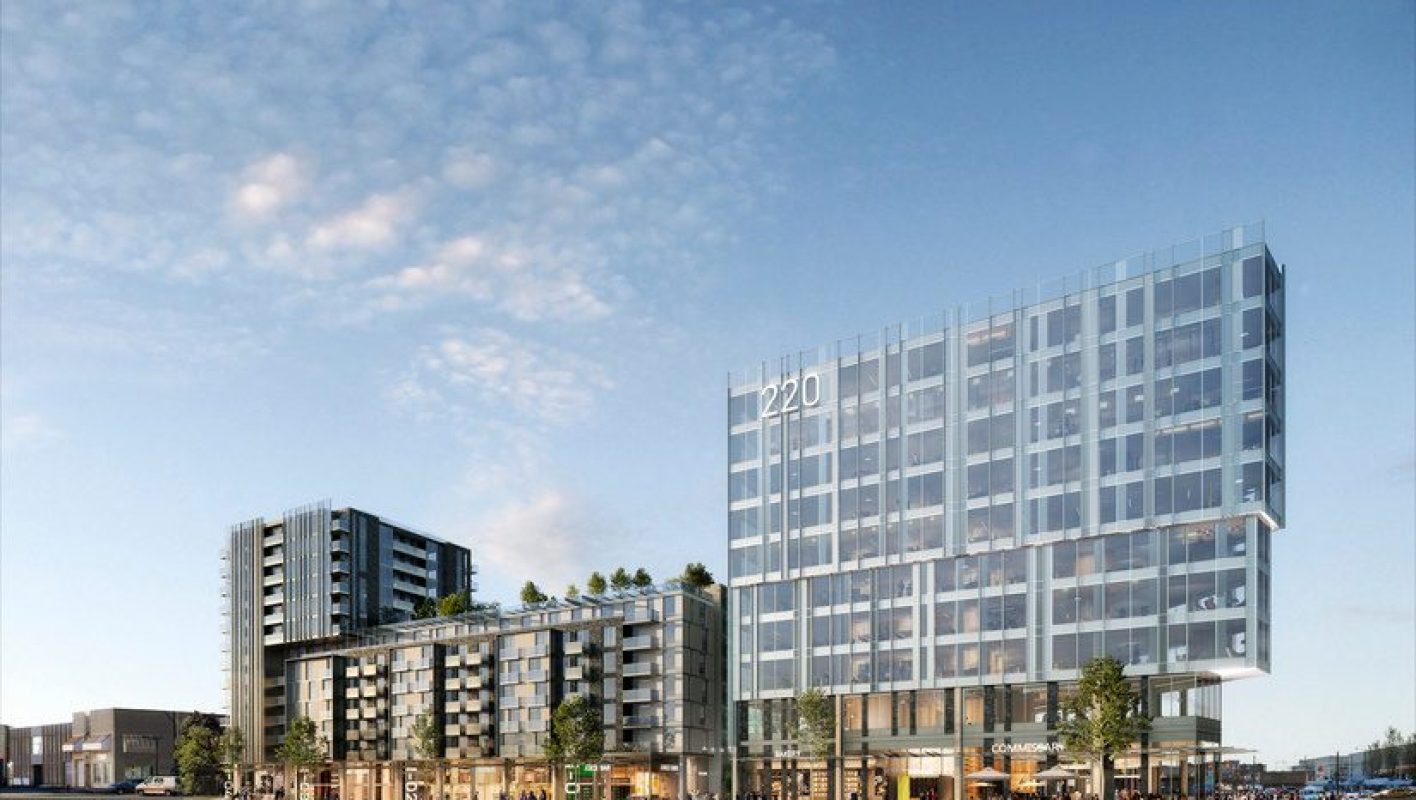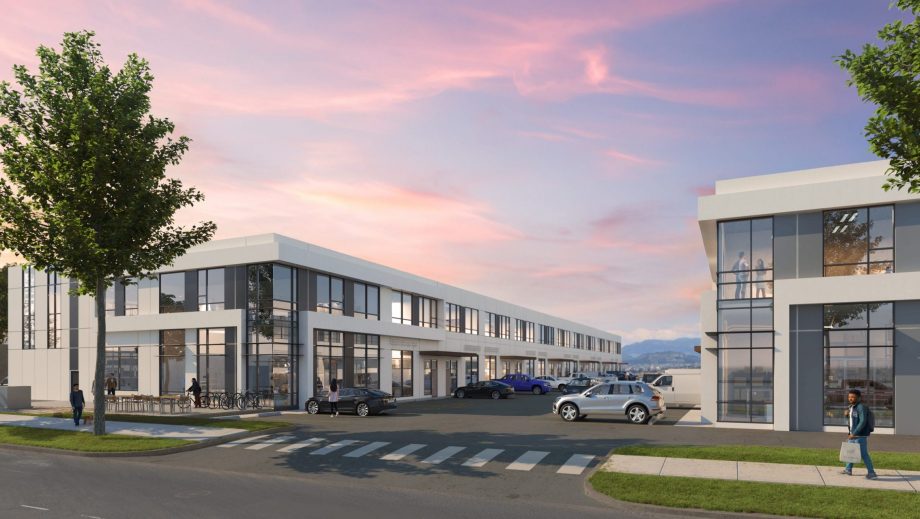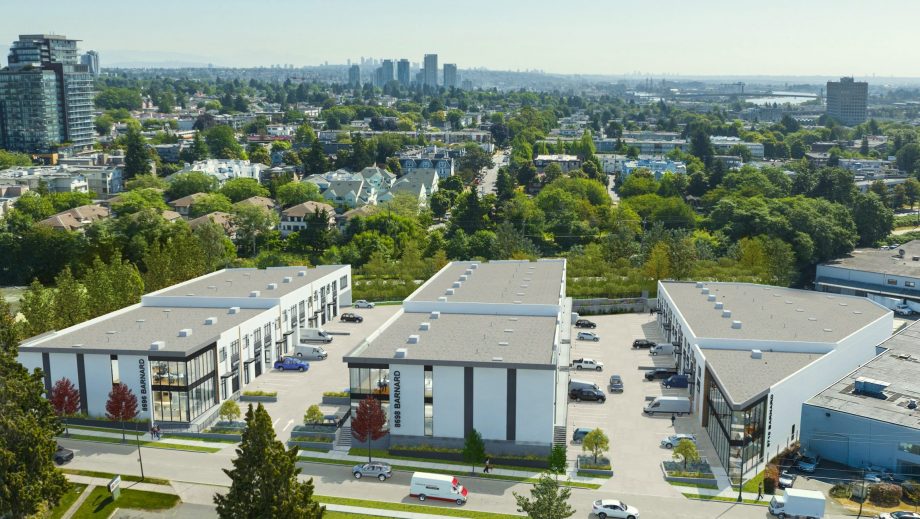

By Frances Bula
March 24, 2022
As the list of health, biotech and other new property developments in the area keeps growing, some nearby residents worry about the potential impact on rental housing
Walk around Seattle’s South Lake Union these days, and it feels like it’s exploding with new life and development. The once-industrial zone is now a hodgepodge of shiny, futuristic office towers that house 21st-century businesses ranging from Amazon to biotech firms, along with hotels, highly designed public spaces, restaurants, apartments and fitness centres.
It’s Seattle’s version of Vancouver’s False Creek Flats. This area, close to downtown and the water, was partly created by filling in an edge of Lake Union. It was the home of David Denny’s pulp mill and later a convenient staging ground for manufacturers of all kinds. Now it’s the new Seattle.
Some of the same winds that blew through there are starting to puff across False Creek Flats and the nearby Mount Pleasant industrial area.
Commercial brokers and builders are buzzing about how hot those two zones are becoming for a new wave of health- and tech-related ventures, as developers prepare for the changes that the $2-billion St. Paul’s Hospital will bring to the Flats at the same time as biotech powerhouse AbCellera is building a large campus near Olympic Village.
Changes to zoning have spurred some of that activity, with a recent tweak to the Mount Pleasant plan that allows doctor/dentist-office-type uses in the once purely industrial area. Before that, the City had revised the rules by allowing office space in industrial zones as long as there was some industrial use on the main floor of any prospective development.
Meanwhile, federal money has been pouring into Vancouver to spur the expansion of biotech and to help create the kind of “supercluster” here that economists and politicians think is the key to seeing cities become innovation hubs.
The result: an ever-growing list of projects underway and more not yet announced, as various players buy or lease properties between Clark and Main, Prior and Great Northern Way, and in the Mount Pleasant industrial zone.
Among them: Keltic Canada, building a tower for medical offices near the hospital; the real estate arm of Great-West Lifeco, developing False Creek Station, 300,000 square feet of office space at Station and Terminal; Evolution Block by PC Urban Properties on Vernon Street, where vaccine maker Precision NanoSystems is moving; and Archetype on Main Street, being promoted as a neighbour of the city’s “innovation hub.” There are also rumblings of big land purchases.
“False Creek Flats is an area full of potential,” says Graeme Scott, VP of development at QuadReal Property Group, an arm of B.C. Investment Management Corp. (and developer of the Archetype building). “The neighbourhood is a prime location for the development of a vibrant community hub.”
Along with those health and biotech projects mostly north of the rail lines, there are other experiments. Frameworks, a new development at Clark and First by Alliance Partners, will be stacked industrial strata. PCI is building on top of the new subway station at First and Thornton. “As people start to see the development unfold, you will see a pretty drastic change,” says Michael Buchan, a principal with Avison Young.
But don’t expect False Creek Flats to become a replica of South Lake Union, for one key reason. The City insists on keeping it an industrial zone, with some office mixed in. So there won’t be huge rental apartment towers and condos to house all the people working in this new cluster. In Seattle, Vancouver’s Onni and Concord Pacific have residential towers up or in the works in South Lake Union. But they can’t do the same in False Creek Flats or Mount Pleasant industrial for the foreseeable future. The only such project on the horizon so far is on the perimeter: a set of rental towers at Prior and Dunlevy proposed by Strand.
Some of those involved in the area don’t think that will be a problem, given other new housing within striking distance. “There is now millions of square feet of rental coming, with Molnar, Chard, Epta, Marcon and a bunch of others in that zone,” says Matthew MacLean, a senior vice-president at Cushman & Wakefield.
Others aren’t so sanguine. “We see the lack of housing as such a limiting factor for Vancouver,” says PCI president Tim Grant, whose firm is developing two big rental projects at Boundary and Hastings, along with two others near VCC-Clark station. “The need for rental residential is really important down there.”
And the residents of Strathcona are getting worried. The arrival of St. Paul’s and thousands of health-care workers looking for a place to live will put even more pressure on that small area of historic homes, social housing, artist studios and the odd cheap apartment building. It was assumed for a while that the buildout of Concord Pacific’s last big swath of land at Northeast False Creek would absorb some of that. But the post–Vision Vancouver city council has gone silent on taking down the viaducts, so there’s zero certainty about when that might happen.
The new apartment proposal by Strand, double the height allowed in the current False Creek Flats plan, bothers some in Strathcona. People aren’t totally negative about the new arrivals, says residents’ association representative Katie Lewis. They’re hoping the hospital and what happens around it will bring in new, desperately needed services.
“But it’s a mixed bag,” Lewis says. “Rental housing is already so limited. And there’s a huge concern about price inflation.” And at the moment, it’s not clear what the City might put in place to help.




